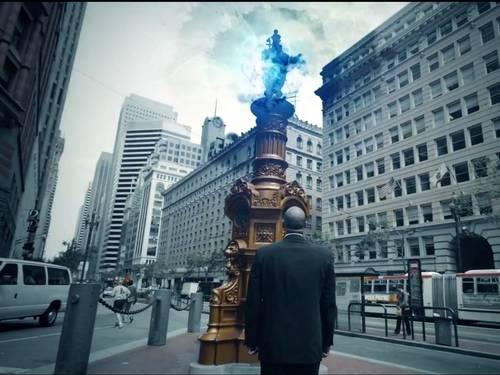


QUBIT AI: Camila Magrane
The Witness
FILE 2024 | Installations
International Electronic Language Festival
Image activated by augmented reality, where 3D animated subjects and scenarios are integrated into a physical photograph. Inspired by the work of Carl Jung, the image is part of a larger series that explores themes such as identity, introspection and transformation. Through AR, game elements were introduced into the piece, offering virtual content unlockable through interactions.
Bio
Camila Magrane is a Venezuelan-American visual artist known for her augmented reality images, integrating 3D animated scenes and subjects into physical photographs. With experience in video game development and a passion for analog photography, she explores the dialogue between the virtual and physical worlds. Magrane’s images are inspired by surrealist compositions and reference the graphic hyperrealism of contemporary video game design.

QUBIT AI: Banz & Bowinkel
Bots
FILE 2024 | Installations
International Electronic Language Festival
Bots presents a computer-controlled society through a series of algorithmically controlled humanoid avatars that appear on physical carpets using augmented reality (AR). Real-time performances synthesize human behavioral patterns into a formalized digital social study. Omnipresent, combined with our devices and incorporated into virtual environments, the work reminds us of our own digitalized world, in which we are surrounded by invisible bots.
Bio
Giulia Bowinkel (born 1983) and Friedemann Banz (born 1980) live in Berlin and have worked together under the name Banz & Bowinkel since 2009. In 2007 they graduated from the Art Academy with Albert Oehlen and started making art with computers . His work encompasses computer-generated imagery, animation, augmented reality, virtual realities and installations.
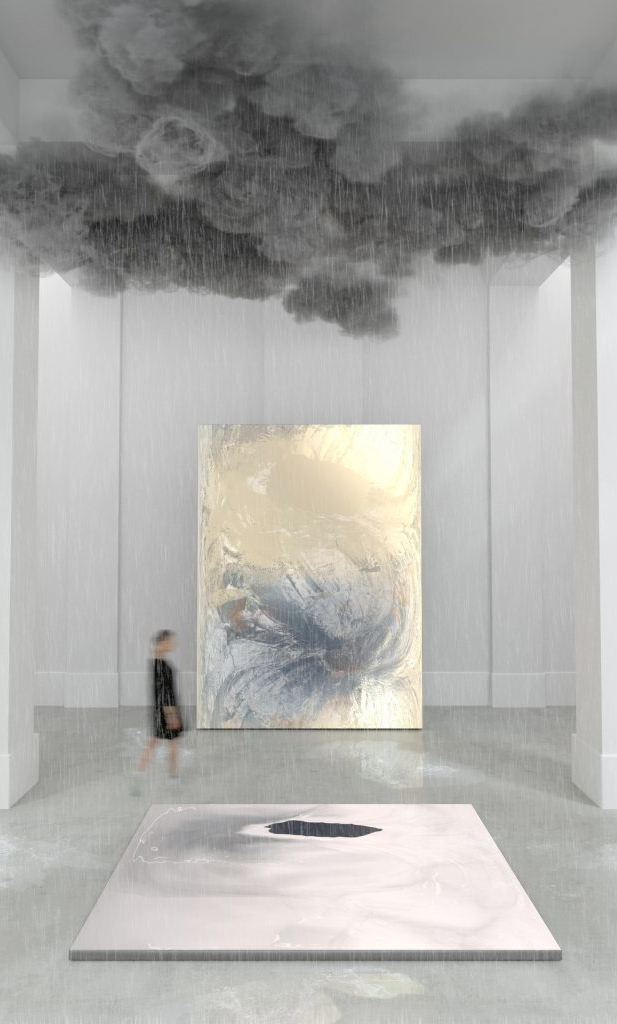
Carla Chan
Falling Black
Unfalling Black is an augmented reality experience that reveals digitally manipulated weather formation in an enclosed environment. Treating the mobile device as a digital window, the work uncovers the displacing choreography of rain, storms and snow, occurring all around the audience and yet witnessed only through the computerized lens.

INES ALPHA
3D-make-up
Ines alpha is een 3D-artiest gevestigd in Parijs. Ze houdt ervan om betoverde en fantastische versies van de werkelijkheid te creëren. Ze begon te ervaren met 3D terwijl ze werkte als art director in reclame, gespecialiseerd in schoonheid en luxe. Haar belangrijkste oeuvre bestaat uit de serie “3D-make-up”, waarin ze de grenzen van make-up en schoonheid verlegt met behulp van 3D-software en augmented reality. Ze probeert te fantaseren hoe volledige esthetische vrijheid van uiterlijk eruit zou zien. Haar doel is om een leuke en creatieve benadering van make-up en zelfexpressie aan te moedigen.
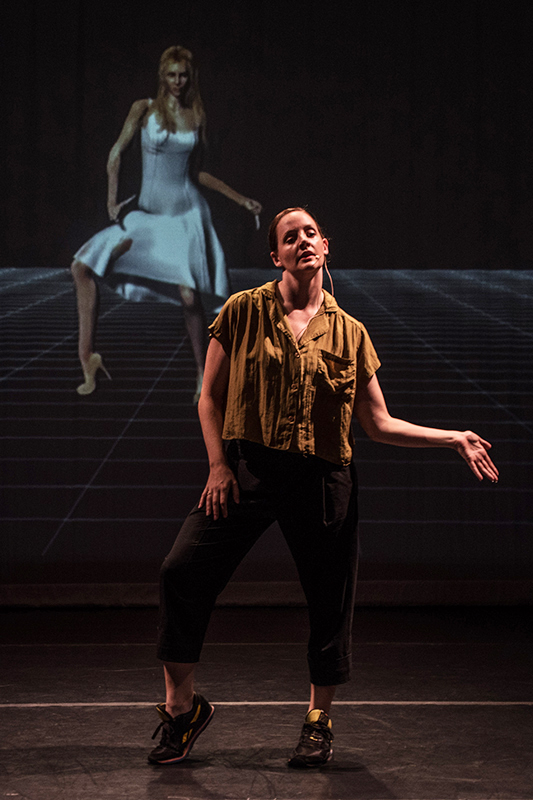
Freya Olafson
MÆ Motion Afterefffect
MÆ – Motion Aftereffect explores motion-capture, ready-made 3D models and monologues found online, ranging from experiences with virtual reality in live gameplay to out-of-body experiences and astral projection tutorials. The work addresses the impact of emerging consumer technologies associated with AR – Augmented Reality, VR – Virtual Reality, MR – Mixed Reality, XR – Extended Reality and 360° video. Monologues sourced from the internet provide the infrastructure for the work; an in-ear monitor feeds Olafson the monologues onstage, challenging her to listen and speak simultaneously. This dual action of listening and speaking enables her to embody a state of presence that references data streaming, live processing, and gaming. As a performer she becomes a conduit, medium, or interface, broadcasting edited monologues from the internet to the audience. The action of performing the work becomes like playing a video or VR game.
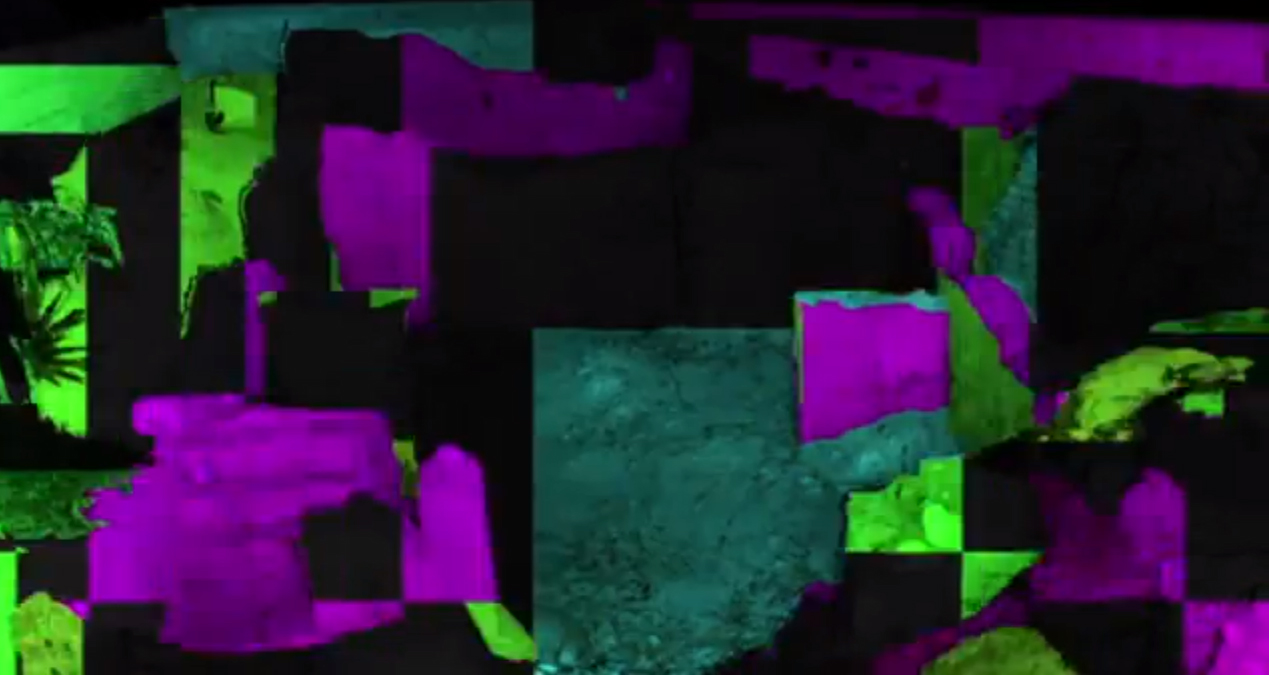
REMAINS
gloWArp
Tecnologie oggi offrono infinite possibilità di azione in ambito museale e spesso queste sono volte solamente alla spettacolarizzazione. Per questo motivo lo Studio Glowarp ha sviluppato un proprio protocollo di attuazione di una metodologia in ambito museale chiamato A.R.I.M. (Augmented Reality In the Museum) e si avvale della collaborazione di storici, archoelogi ed esperti di comunicazione per la creazione di narrazioni e storytelling digitali che puntino al senso dell’intervento lasciando alla spettacolarizzazione un ruolo importante ma non centrale nella progettazione multimediale.

YURI SUZUKI
尤里铃木
يوري سوزوكي
beatvox
File Festival
By EPFL + ECAL lab in collaboration with Yuri Suzuki Direction: Nicolas Henchoz Designer: Yuri Suzuki Engineering: Gavrilo Bozovic, Fanny Riedo Software development: Gavrilo Bozovic, Fanny Riedo, Eric Morzier A microphone-controlled drumkit. Renowned as an artist for his projects questioning the materiality of sound, Yuri Suzuki has his own way of looking at augmented reality. For Berlin, he is creating an installation which will enable anyone to control a set of drums with their own voice. He harnesses the principles of augmented reality to interpret them in the realm of sound.

NAJA & DEOSTOS
ECTOPLASMATIC HOUSING
File Festival
‘Ectoplasmatic Housing’ aims to speculate about how architecture can mediate the pervasiveness of the contemporary ‘infocalypse’ age. An architectural experiment of physical and digital space through the use of interactive design and augmented reality.
Browsing through a domestic safari of Trojan savannas or sterilised virus forests while contemplating the emergence of thousands of cheap-friends-facebook flowers blossoming among the pulsating cocoons of dying obsolete apps… Quantum reality theories are ripe for the picking from wiki branches of tweeting pink daily hit dwarfing trees…
Ectoplasmatic Housing aims to speculate about how architecture can mediate the pervasiveness of the contemporary ‘infocalypse’ age. It cultivates data for a spatial interactive second nature manifestation. It grows, blossoms, dies and haunts. Overlayed with the physical this unstable ectoplasmatic nature may shift radically into a rapid nuke ecology of nightmares.

Joon Y. Moon
Augmented Shadow
File Festival
Augmented Shadow is a design experiment producing an artificial shadow effect through the use of tangible objects, blocks, on a displayable tabletop interface. Its goal is to offer a new type of user-experience. The project plays on the fact that shadows present distorted silhouettes depending on the light. Augmented Shadows take the distortion effect into the realm of fantasy. Shadows display below the objects according to the physics of the real world. However, the shadows themselves transform the objects into houses, occupied by shadow creatures. By moving the blocks around the table the user sets off series of reactions within this new fantasy ecosystem. In this installation, the shadows exist both in a real and a virtual environment simultaneously. It thus brings augmented reality to the tabletop by way of a tangible interface. The shadow is an interface metaphor connecting the virtual world and users. Second, the unexpected user experience results from manipulating the users’ visual perceptions, expectations, and imagination to inspire re-perception and new understanding. Therefore, users can play with the shadows lying on the boundary between the real, virtual, and fantasy. Augmented Shadow utilizes this unique interface metaphor for interactive storytelling. Maximizing the magical amusement of AR, it is embedding an ecosystem where imaginary objects and organic beings co-exist while each of them influences on each other’s life-cycle, even though it is not in use by users. Light and shadow play critical roles in this world’s functions causing chain reactions between virtual people, trees, birds, and houses. A set of tangible blocks allows users to participate in the ecosystem. Users can influence on the system by playing with the blocks or observe the changes of the shadows as if kids were playing with an ant farm.
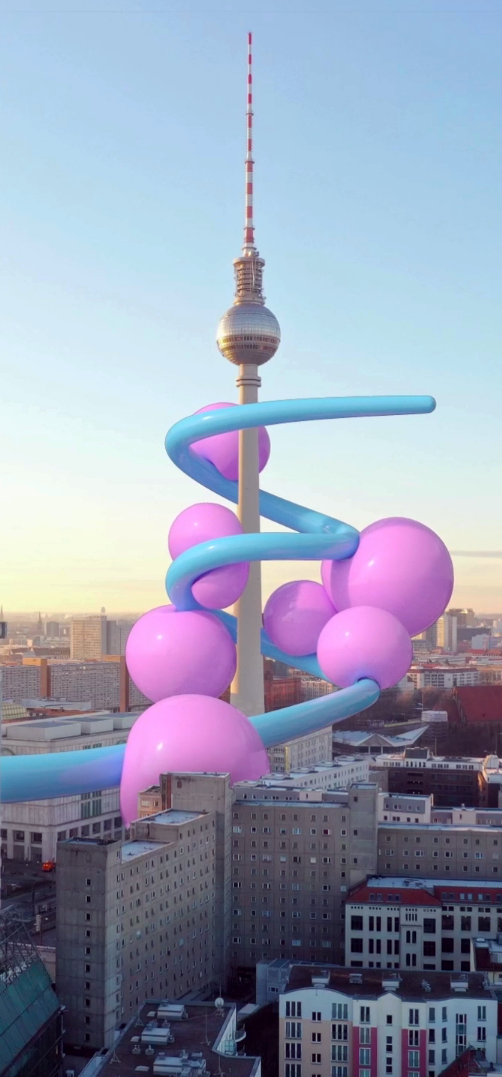
Manuel Rossner
Hotfix
In the midst of the pandemic, people experience every day that technology such as smartphones and the Internet make social distance bearable. With his AR sculpture, Manuel Rossner shows how technology can become a hotfix, a quick solution to an unexpected challenge. “Hotfix” with its bubbles and lines is a playful introduction to problem solving through gamification.

KEIICHI MATSUDA
Augmented (hyper)Reality
Keiichi Matsuda (BSc. MArch) is a designer and film-maker. He began working with video during his Masters of Architecture at the Bartlett school (UCL) as a critical tool to understand, construct and represent space. Keiichi’s research examines the implications of emerging technologies for human perception and the built environment, focusing on the integration of media into everyday life. He has a multi-disciplinary approach to his work, using a mixture of video, motion graphics, interaction design, and architecture to create vibrant “hyper-real” environments where the distinctions between physical and virtual start to dissolve.